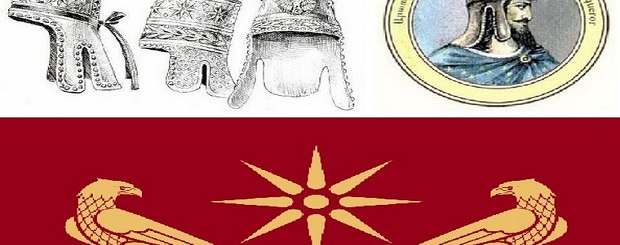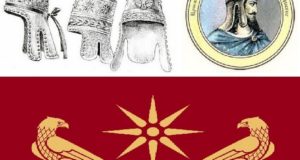
History of Armenia: Bagratuni Dynasty.
Saturday, December 28, 2019
The history of Armenia is a unique world treasury full of chronicles of great civilizations, biographies of legendary people, dramatic moments associated with the runoffs of the formation of Christianity. Many times Armenia suffered foreign invasions of the conquerors, more than once it seemed that the very name of Armenia was erased from the map. But the Armenian people survived, having defended their existence in a difficult struggle.
The beginning of the Bagratuni dynasty – restoration of independence of Armenia

At the end of the ninth century, the era of the Arab Caliphate was nearing its end. The weakened Arab power was losing its integrity and power. The patriotic forces of Armenia took advantage of this.
The Arab forces could no longer suppress the national liberation struggle, and from 855, the Armenian nakharar Ashot Bagratuni was appointed governor of the Khalifa in Armenia. He held a series of events designed to strengthen the country’s economy and political unity. Prince Bagratuni was highly respected both among the people and among the noble families. In 869, at a general meeting of Armenian nakharars, it was proposed to restore royal power in Armenia, and to appoint Prince Bagratuni as king. The assembly sent appeals to the capital of the Caliphate with a request to recognize the Armenian king. And only after sixteen years, when the Caliph realized that it would not be possible to restore full control over Armenia, he approved the restoration of the Armenian monarchy.
In 885, King Ashot Bagratuni I was crowned, laying the foundation of the Bagratuni dynasty, the kings of which ruled Armenia from 885 to 1045. In recognition of the Caliph, he sent King Bagratuni the royal crown and royal attire. Also, the Tsar’s crown was sent to him by the emperor of Byzantium Vasily I, in whom there was Armenian blood. Thus, the Armenian Kingdom was recognized by the two largest powers of the Middle East of that time.
King Ashot I ruled the monarch from 885 to 890 years. He became famous as an outstanding politician. Through dynastic marriages, he managed to unite most of the Armenian principalities, and even some areas of the country that belonged to the Arab emirs, into one state. He also concluded a peace treaty with Byzantium, going for this to Constantinople. Ashot Bagratuni I died on his way home.
After the death of Ashot I, the throne passed to his son – Smbat. Tsar Smbat I reigned from 890 to 914, and continued the policy of strengthening and uniting Armenia. He entered into a new treaty with Byzantium, leaving for Constantinople in 893. However, the strengthening of the power of the Armenian kingdom aroused the discontent of some neighboring emirs, and some who wanted complete independence of the Armenian nakharars. Yusuf, the emir of Atropatena, repeatedly invaded Armenia, but the Armenian troops managed to defeat him each time. Then Yusuf took advantage of the discontent of the governor of the Vaspurakan region – Naharar Gagik Artsruni. The Abar caliph was also dissatisfied with the strengthening of the Armenian kings, and therefore gave the green light to the coronation of Artsruni by the new king of Armenia. Artsruni was granted the right to collect taxes from Armenian lands. Soon, the combined forces of Yusuf and Artsruni invaded the possessions of the kings of Bagratuni. Unable to win by force, Yusuf lured Smbat to him by cunning, then executed him, and crucified his body on the wall of the Dvina fortress. The aggressor forces looted Armenia, which again faced the threat of losing independence.
The struggle for the independence of Armenia was led by the son of Smbatu – Tsarevich Ashot. Having in his disposition small forces, he managed to achieve victories over superior enemy forces. So, in 921, in the battle of Lake Sevan, he defeated a large army of Arabs. Around the same time, Gevorg Marzpetuni, loyal to Ashot, Naharar, defeated the Arab army with his small army. For his victories, Ashot received the nickname Ashot Erkat – that is, Ashot Iron. Seeing that the Arab troops were ruining the country, many naharars supported the power of the king. Ashot Erkat also visited Constantinople, where he made an alliance with Byzantium against the Caliphate. Worried by this turn of events, the Caliph recognized Ashot Erkat as king. In 922, he presented Ashot with the royal crown, and awarded him the title “King of Kings” – which meant that from now on Ashot is the sovereign ruler of Armenia, and all the other nakharars and emirs of the Armenian land should obey him.
Thus, the authority of the Bagratuni dynasty was established.
ORIGINE SOURCES-/2019/12/28/history-armania- dynasty- bagratuni/
TRADUCTION ANGLAIS «lousavor avedis»
